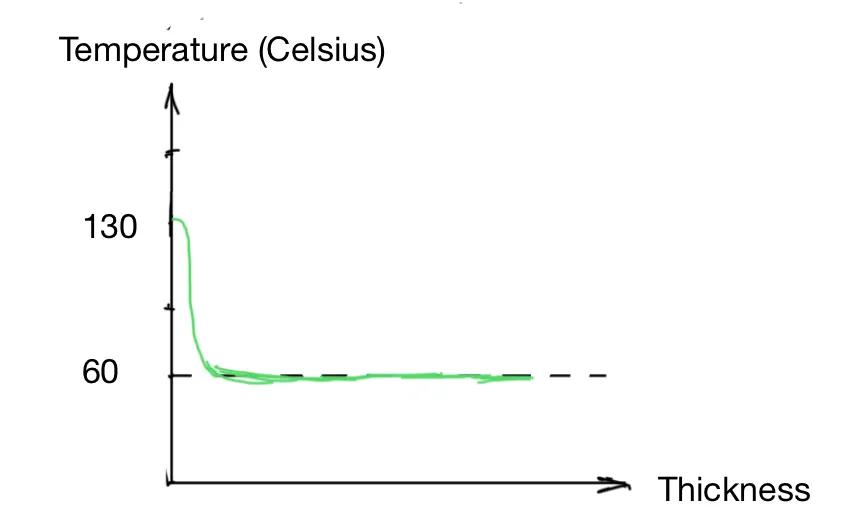The Problem Statement
First, let’s define what we mean by a steak well-cooked.
The basic building blocks of animal meat are myofilaments (protein cells), which bundle together to form myofibrils. This bundling of bundles goes on until muscles are formed. Around each of these bundles is a sheath of collagen. As the temperature rises to around 60°C, the collagens begin to contract and squeeze the moisture out of muscle cells. To keep your ribeye juicy, you want to keep the internal temperature of the steak under 60°C (140°F). As it turns out, 60°C is about the lowest temperature at which beef is safe to eat.
Water in the meat fiber is not the only reason the meat tastes juicy. When you bite into a piece of meat, there is that initial burst of meat juice. As you continue to chew, the fat and flavor in the meat stimulate the flow of your own saliva, which sustains the sensation of juiciness. A piece of bland, moist meat is not juicy. The distinctive flavors of seared steaks come from the Maillard reactions. Under high temperatures, the protein and sugar in the meat undergo a series of complicated reactions, producing hundreds of new molecules that result in intense flavors. These are called the Maillard reactions. They are some of the most important flavor-producing reactions in cooking. The Maillard reactions do happen at lower temperatures, but they accelerate at around 130°C. At that temperature, the water has evaporated. So the meat has to be dry where Maillard reactions happen. In other words, you want them to happen in part of your steak, but not too big a part.
To sum up, our problem statement becomes: we want a barely cooked interior and a browned crust. The ideal temperature distribution inside the steak looks like this:

Figure 1: Ideal temperature distribution
It’s not a problem unique to cooking steaks. A lot of cooking is about getting to a desired temperature profile inside the ingredients. It gets more complicated if the internal temperature cannot be easily measured or if different parts of the food behave differently under the same temperature.